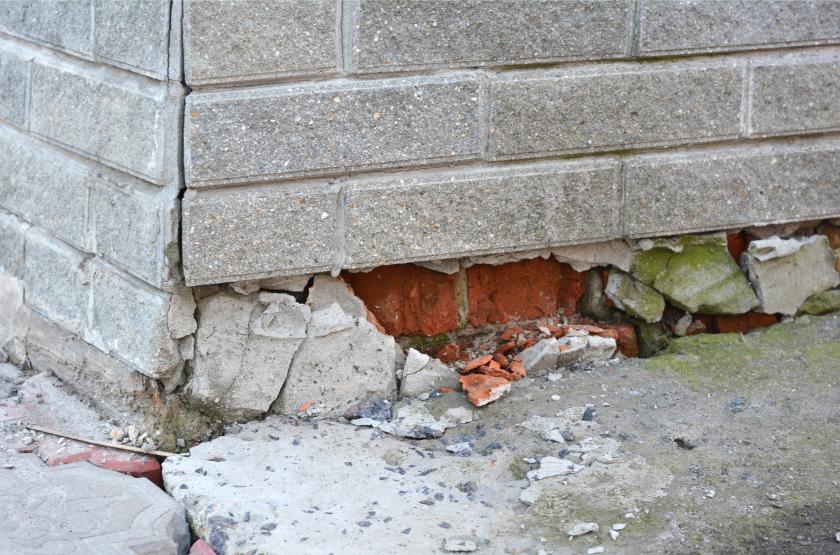You might not think about the foundation when buying a home until it’s too late. However, a house’s foundation is one of its most essential features. It plays a significant role in keeping the house stable and protecting the inhabitants from natural elements like rain, wind, and earthquakes. The foundation also supports all other parts of your home and protects them from getting damaged over time.
If any of these things concern where you live or if you see cracks or sagging floors in your home, it’s time to think about foundation repair. You can take several precautions to minimize damage to your foundation over time and spot trouble early on before it gets worse and more expensive to fix. Here are the eight building foundation repairs.
1. Sticky Doors And Windows
If your doors and windows are sticking, they could indicate that your home’s foundation needs repair. Sticky doors and windows can cause foundation cracks, particularly in areas that are hard to reach. If you notice problems with your doors, try to see if they’re sticking or if you can hear a creaking sound as they open and close.
You should also check your windows, especially the ones on the higher floors. If there is any evidence of leaks or moisture damage, it could also be a sign of dry rot. This can lead to mould problems. If you find cracks in your foundation, there’s a good chance that dry rot is to blame. Call a professional immediately because it could lead to foundation issues.
2. Poor Water Drainage
As water sits on your foundation, it can cause issues. If you notice cracks in the foundation of your home, it could mean that there is too much water on the surface of your home. The problem is that this extra moisture can lead to several issues. It can make it harder for the house to handle heavy rains or other weather events, like ice storms or tornadoes. It can also lead to mould problems and damage your house’s structure.
If you notice that there are cracks in your foundation or if you have a leaky basement, call a professional as soon as possible. They will be able to advise you about what repairs need to be made and how much it will cost for them to do them for you.
3. Cracks in the drywall
If you see cracks in your walls or ceilings, this could signify foundation problems. Cracks in the drywall can be caused by settling, settling foundations, and even water damage. If you see heavy cracking on the ceiling or wall, it’s time to call a professional. There are many reasons why drywall cracks. If you notice that your foundation is broken, you should contact a professional to inspect it and make repairs. This can avoid the possibility of more severe issues in the future.
4. Bowing Walls
A slight outward bulge in a wall or ceiling may be caused by a heavy object’s weight, like a piece of furniture pushing down on the foundation. This can be an early warning sign of a foundation problem. The best way to fix this is to install additional support beams and braces between each floor to keep the walls from bowing out.
5. Movement Of Cabinets
If you notice that your cabinets are moving around, it could signify a foundation problem. The cause of this movement can range from faulty construction to improper and uneven load-bearing wall panels. Move all your items out of your cabinets and into an affordable storage unit. If the floor or the walls are not strong enough, the cabinets might begin to move when the wind blows or when there is a seismic event.
The good news is that most of these issues can be fixed by replacing your flooring and wall panels with stronger ones. This will also provide better support for your cabinets so they won’t move around anymore.
6. Uneven Floors
You may have noticed that some parts of your house are slightly higher than others. This is because the flooring or subfloor has settled unevenly. When this happens, it can cause structural damage to the foundation and render it unable to support other parts of your home. You can reduce the risk of damage to your home’s foundation by ensuring that the floor is level with one another and has no cracks or holes.
7. Door Gaps
Door gaps create a weak point in your foundation. If you have a door not correctly aligned with your home’s frame, it can cause the frame to flex and eventually cause cracks or sagging. Poor construction of your house can also cause door gaps.
Installing new door hardware is a great way to make your home more secure. However, if you have gaps around the doors, the gap between the door and the frame can be as small as a quarter of an inch or up to three inches wide.
Fix these gaps by installing a new set of hinges and door stops on each side of the door so that you can lock the doors from the inside. You will want to ensure that all entries are level and square with the frame, so there’s no gap between the door and the frame.
8. Age Of The Building
The age of your home determines the life expectancy of your foundation. For example, if your home was built in the 1940s, there’s a 50% chance it will have significant foundation issues. It likely has a concrete slab as opposed to a steel-reinforced concrete slab. This is because most homes from this era were built with concrete foundations prone to settling and cracking over time.
If your home is older than the 1970s, checking your foundation regularly for cracks and sagging floors is essential. The longer you wait to fix foundation issues, the more expensive it will be to resolve them when they occur.

